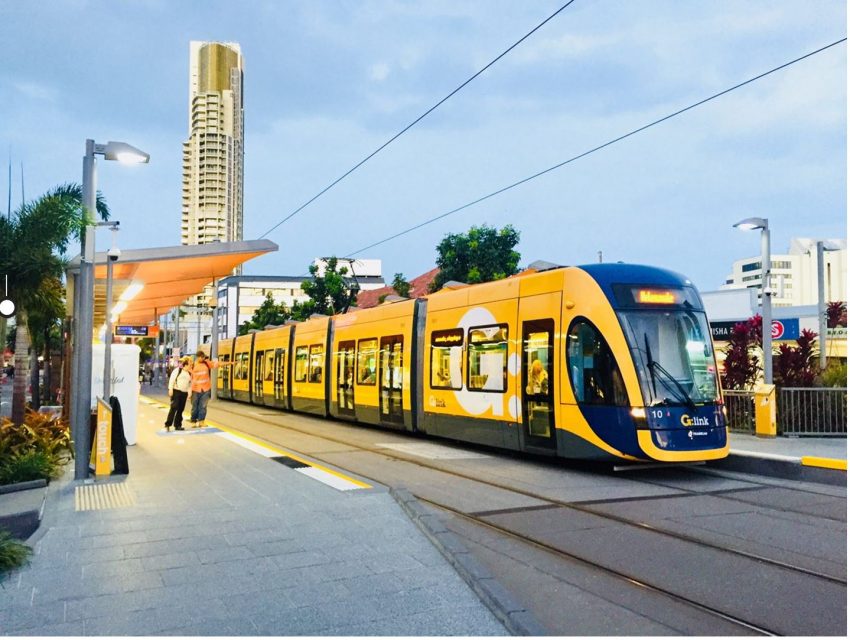
Gold Coast Light Rail ‘Tram’ in Southport Station. (Photo by Patricia Madronio, EBC Australia Bureau, Eagle News Service)
By Patricia Madronio, Diego Madronio,
Xelinne Ryan-Andrews and Mark Calaguas
EBC Australia Bureau, Eagle News Service
(Eagle News) — Gold Coast is one of the fastest growing cities in Australia and with population growth comes increased travel demands. In order to counter congestion, maintain the great lifestyle in the city, and turn Gold Coast into a mature and world-class destination, the Australian government launched a light rail master plan.
Now almost a $2 billion investment, the Gold Coast’s Light Rail System is changing the scene of Australia’s public transport. Labeled one of the biggest public transport projects in the country and the first light rail system in the state of Queensland, the Gold Coast Light Rail – also known as the G:Link – is a major contributor to making the Gold Coast a modern and accessible destination.
The city and its inhabitants have enjoyed many benefits from this investment. These include decreased road congestion, reduced air pollution caused by vehicles and the convenience of stations only being a short distance from most of the notable locations in the city, including: major shopping centers, beaches, The Gold Coast Hospital and Griffith University. Most importantly, it is accessible for all citizens, as wheelchair access is included in every stop.
The light rail is also greatly reliable when it comes to the times of the arrival and departure. A local also commented,
“What the light rail has done has shown the population of Gold Coast what it’s like when you’ve got good quality transport”.
Limitations to the light rail include some traffic accidents due drastic changes in the roads and stoplights, and increased traffic in the city due to the construction of the rails.
The City’s transport strategy supports the future expansion of the light rail network, as well as wider improvements to public transport across the Gold Coast. This refers to Stages 3 and 3A, which will be extensions to the suburbs Coolangatta and Burleigh Heads.
The G: Link has provided not only easier access to the Gold Coast Airport but also to the Brisbane Airport. From then on, according to the City Transport Strategy 2031, further extensions of the Gold Coast Light Rail will be in motion once Stage 3 to Coolangatta is completed. The Gold Coast government has big plans for the fast-growing population of the Gold Coast and is ready to provide the reliable service of the light rail to the entirety of the city.
Gold Coast is a renowned tourist spot all over Australia, hauling in nearly 13 million visitors each year and amassing 12,500 new residents annually.
With the massive influx of people, the G:Link light rail has made city wide transit effortless for long time residents and sightseers alike. Along with easily accessible travel all around Gold Coast, the light rail’s tourism benefits have greatly benefited the city.
With tourism as Gold Coast’s top market, the economy is expected to increase exponentially with the extension of the track. With future extensions of the track already in planning, Gold Coast’s future looks bright.
(with additional research by Jominic Lay)








